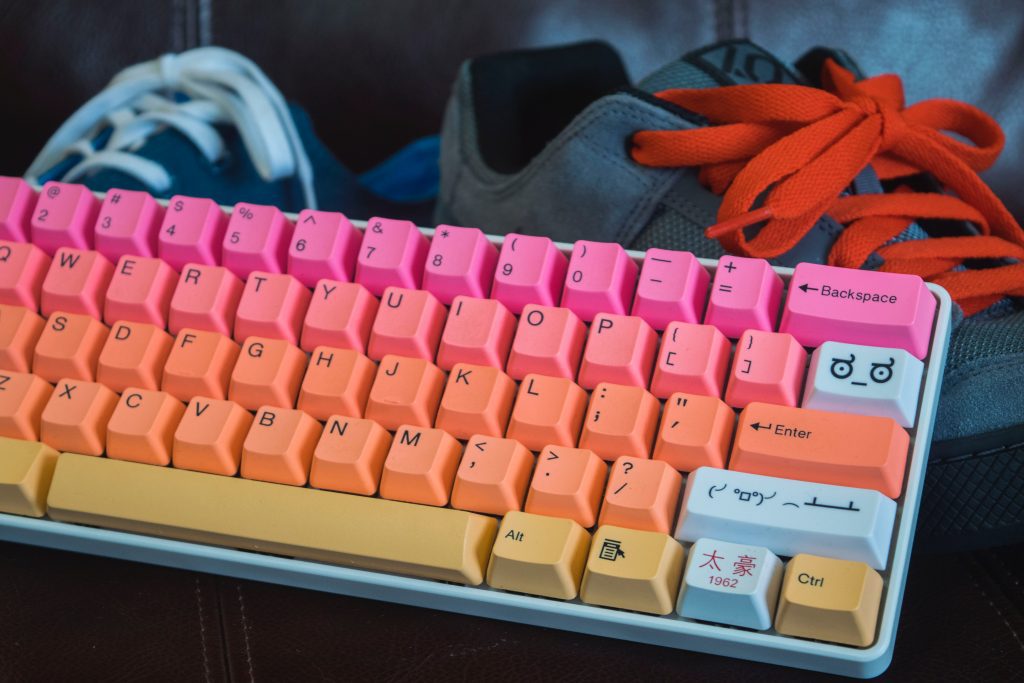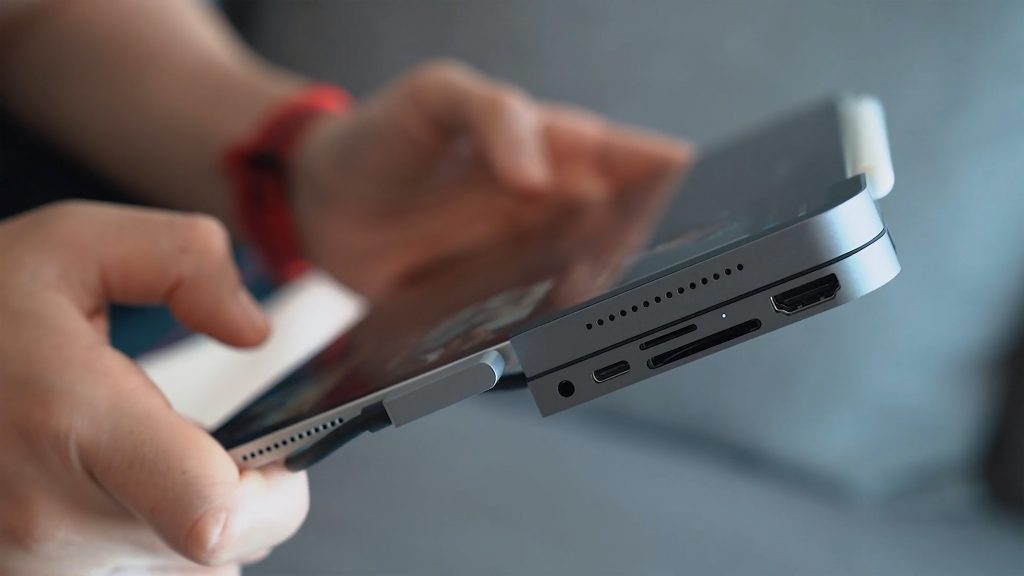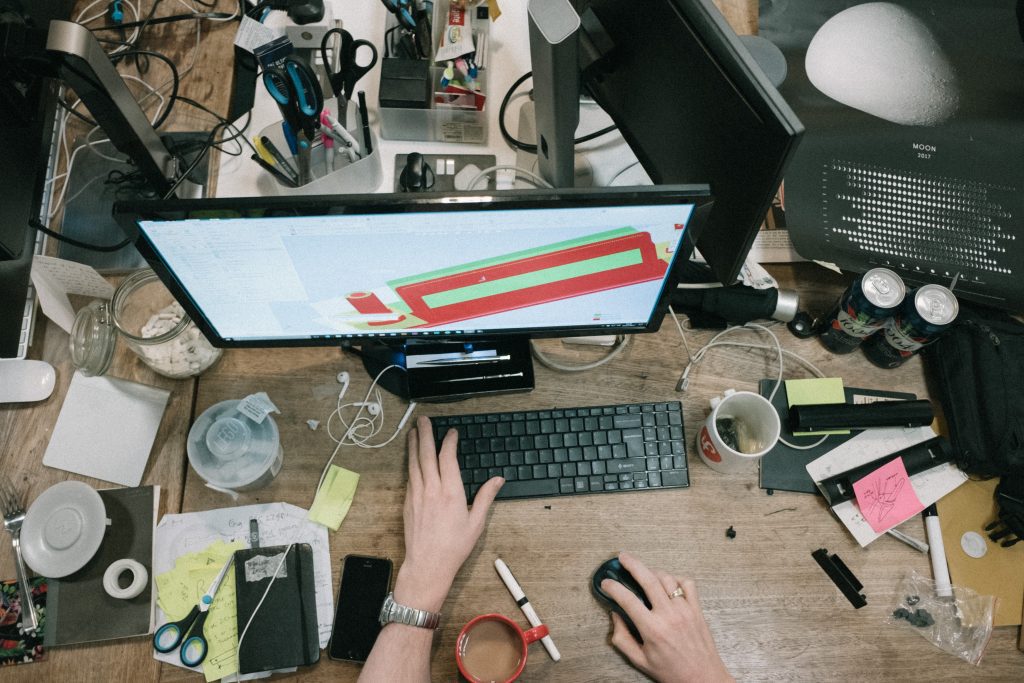Looking for a good keyboard for your Mac computer? If you haven’t considered mechanical keyboards, you should add them to the list.
While once the domain of Windows PC gamers and enthusiasts, mechanical keyboards have grown in popularity in recent times. And with that popularity has come a new wave of mechanical keyboards made specifically for macOS.
And if you don’t already have one, you should consider buying one. Read on to find out why.
What is a mechanical keyboard?
First of all, the basics. To understand what a mechanical keyboard is and how it can benefit you, you need to know a thing or two about keyboards.
Keyboards rely on switches that are activated by pressing a key. The most common keyboards that exist today are membrane or rubber dome keyboards.
These keyboards have an actual rubber dome under each key that activates when you press them. Even scissor switches or butterfly keyboards, as Apple’s MacBooks are famous for, rely on rubber domes.
But mechanical keyboards are different. Once upon a time, all computer keyboards were mechanical. But its popularity waned as membrane keyboards, which are cheaper to make, became the norm. Now, as we mentioned, they are making a comeback.
Instead of a rubber dome or membrane key switch, mechanical keyboards will have a metal spring or other analog solution that activates the switch when the key is actuated or pressed.
That results in a very different typing experience, and a few other benefits as well.
Benefits of a mechanical keyboard for macOS
So why should you get a mechanical keyboard for your Mac device? Well, there can be a lot of different reasons for different people. But these are some of the most important.
- Durability. Most mechanical keyboards are rated to withstand millions of keystrokes. The famous MX Cherry switches, for example, are rated at 30 to 70 million, compared to 5 million for a standard rubber dome keyboard. In other words, they can be the perfect antidote to problems with Apple’s butterfly keyboard switches.
- Robustness and resistance to wear. Sure, your mechanical keyboard probably won’t let you down. But the typing experience won’t change over time either. This is because mechanical switches don’t actually “wear out” as rubber keycaps can. Your mechanical switches will type the same from day one for years to come. More than that, mechanical switches are much more robust and stable when typing.
- Accuracy. A mechanical keyboard is much more tactile than a rubber dome or scissor switch. Think of typing on an old-fashioned typewriter. Depending on your typing style, that can mean speed and accuracy benefits over more common keyboard types.
- Personalization. There is a whole community of people who are excited about customizing mechanical keyboards. Just google “craft keys” if you don’t believe us. That’s something you just don’t get with a magic keyboard.
And finally, it’s hard to overstate how much fun typing on a mechanical keyboard can be. You can even be more productive, especially if you’re in a typing-intensive career like programming or writing.
Any drawback of a mechanical keyboard?
As mentioned above, a mechanical keyboard represents a very different typing experience than most macOS users. But just because it’s different doesn’t mean it’s bad.
With that said, there are a few considerations to keep in mind when it comes to using mechanical keyboards, especially if you’re a macOS user.
- Availability. There are many mechanical keyboards for Windows PC users. But for macOS, it’s a different story. While you can use any mechanical keyboard with a Mac, one with a macOS-specific keyboard layout can be helpful. And when it comes to Mac mechanical keyboards, the options can be slim.
- Price. In general, mechanical keyboards will be more expensive than membrane or rubber dome keyboards. That may be especially true for macOS-specific mechanical keyboards, as they’re currently a “specialty” item.
- Noise. There is no way around the fact that mechanical keyboards can be noisy. That’s especially true if you choose a “clicky” switch like a Cherry Blue MX. But it’s not just the switch that matters. The construction and materials used also play a role.
- Adjustment period. If you’re used to the thin, low-profile key switches that Apple uses, you’ll need an adjustment period for a mechanical keyboard. Mechanical keys are usually taller. And while low-profile mechanical keyboards do exist, they’re not as common as the standard “tall” size.
Some mechanical keyboard recommendations
If the benefits sound appealing and the drawbacks aren’t a deal breaker, then you should consider choosing a mechanical keyboard for your Mac setup.
However, there is no one-size-fits-all mechanical keyboard. It’s best to do some research and find out which manufacturer and model are right for your needs.
That said, there are some popular macOS-specific keyboards on the market that we can recommend.
The Keychain series, for example, offers top-tier mechanical keyboards with Bluetooth connectivity and RGB backlighting. We can recommend the K2 as a compact but high-profile keyboard, or the K1 as a low-profile keyboard.
If you want a simple white mechanical keyboard to match your Magic Mouse or existing Apple setup, then this Azio MK Mac Model is a good choice. (Opt for the wired version, as some users notice issues with the Bluetooth variant.)
Das keyboards are also top-tier options with Mac layouts. And if you’re a stickler for key switches, they also use Cherry MX switches instead of the Gateron switches seen on other keyboards in a similar price range.
Of course, there are mechanical keyboards that are not specific to macOS. These won’t have the keyboard layout you’re familiar with, but they’ll still work on your Mac. In theory, you could also buy aftermarket keys for your Mac’s layout later on.
Some good non-Mac keyboards include the Ducky One Mini 2 and this cheaper switch-equipped blue model from Amazon.
Related Post: Why doesn’t Apple have a mechanical keyboard yet?
A note on critical switches
Not all mechanical keyboards will let you choose your key switch. But for those who do, it’s worth thinking about which one is right for you.
Some of the more popular options include Blues, Reds, and Browns. These will be pretty similar across brands including Cherry MX or Gateron.
- The blue ones are considered to write switches. They feature a tactical punch as well as a distinctive, high-pitched “click.” Please note that they can be quite noisy.
- The red ones are considered game switches. They are described as “linear” and are generally the quietest.
- Browns are a good middle ground between blues and reds. They have a tactile “bump” but not a loud click.
At the end of the day, there is no “better” change. It all comes down to personal preference. We recommend going to Best Buy or Fry’s Electronics and trying out the mechanical key switches they have there.




